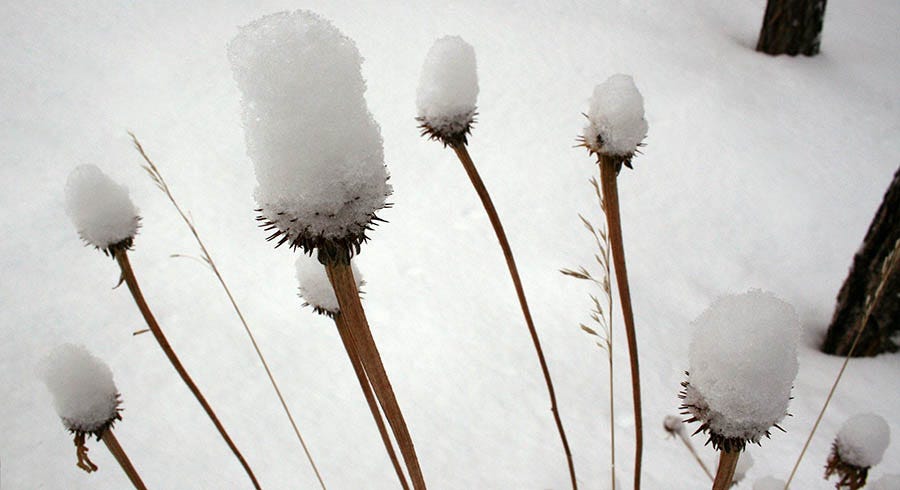Sowing Wildflower Seeds in Winter
By David Salman

Traditionally, we think of the balmy days of spring or summer as the time to sow seeds in our gardens. And while this may be true of many annual flowers and vegetables, seeds of perennial wildflowers are best sown in the late fall or winter! Why? Many perennials have seeds that require a period of cold, moist conditions to break down naturally occurring chemicals in the seeds that inhibit germination. These substances protect the seeds from germinating prematurely such that they wait until the following spring to sprout. This process is called cold stratification.
I have found that by working with nature and the weather, perennial wildflower seeds can be sown directly into the landscape to add color, feed pollinators like bees and hummingbirds and create a more natural looking landscape.


My favorite technique is to mimic mother nature and sow these seeds just before snowfall. You can watch the weather carefully beginning in the late fall/early winter months for predictions of a good snowfall, 4-6 inches at least. You can seed just before the snowstorm, so the snow acts as a blanket.
Steps To Sowing In Winter
- Make sure you seed in an area with a prepared garden bed (grass or weeds have been removed).
- Get a plastic bucket and mix the seeds with slightly damp sand to help distribute the seeds more evenly onto the ground.
- Go out and scatter the seed/sand mix over the area to be seeded and wait for the snow to come and “tuck them in.” When the snow melts, the freezing at night and thawing during the day help work the seeds into the soil. Continued snows just enhance the effect and provide the moist, cold conditions these perennials seed require to germinate the following spring.

If you miss the first couple of snows, it’s fine to sow the seeds right on top of the snow (though they may not germinate quite as robustly as those sowed directly onto the ground). With a little sunshine, the darker seeds absorb and heat up melting themselves down into the snow. Better yet, the next snow buries the seeds down more deeply below the surface. Just as sowing prior to the first snows, seeds are moved into soil by freezing and thawing as the snow melts later.
I don’t recommend sowing on top of the snow if your yard gets a lot of wind. Wind can blow the top layers of the snow and seeds to another part of the landscape or your neighbor’s yard! In windy areas, it’s best to try and get underneath the snow earlier in November of December.
To make sure the perennial wildflower seeds are subjected to a long enough stretch of cold, moist conditions, try to get the seeds sown by February. Note that a mixture of annual and perennial wildflower seeds can be sown using this method. The annuals will sprout nicely even though they don’t need the damp winter cold.
Be patient and by late spring/early summer you should see lots of small seedlings establishing themselves into your landscape.
Text and Photos by Founder and Chief Horticulturist David Salman.
© All articles are copyrighted by High Country Gardens. Republishing an entire High Country Gardens blog post or article is prohibited without written permission. Please feel free to share a short excerpt with a link back to the article on social media websites, such as Facebook and Pinterest.